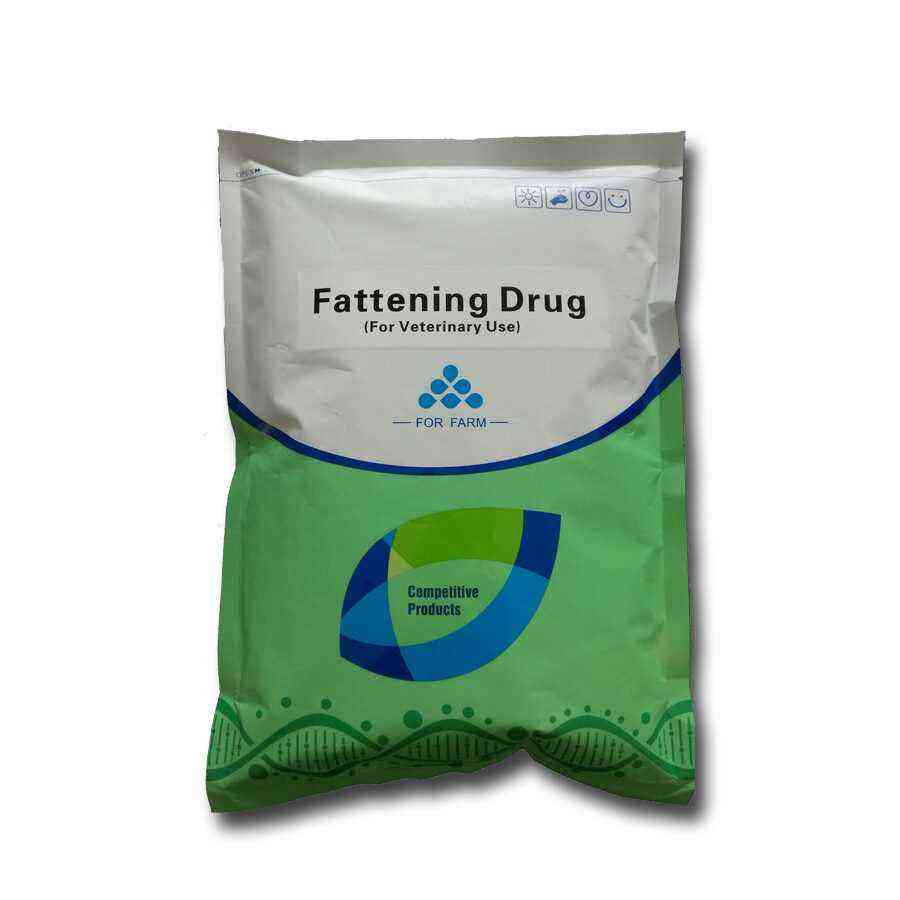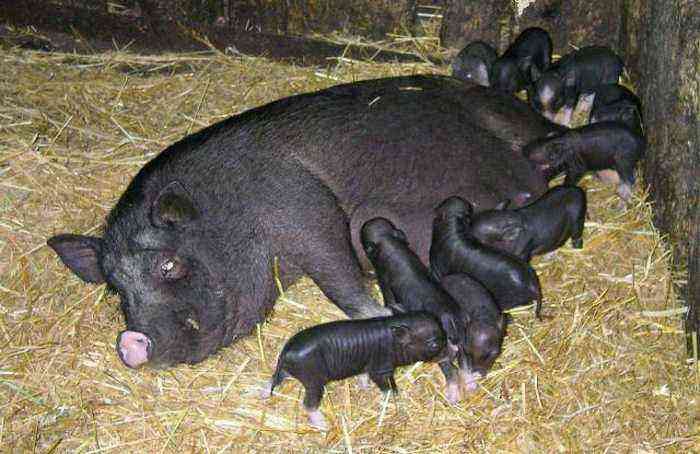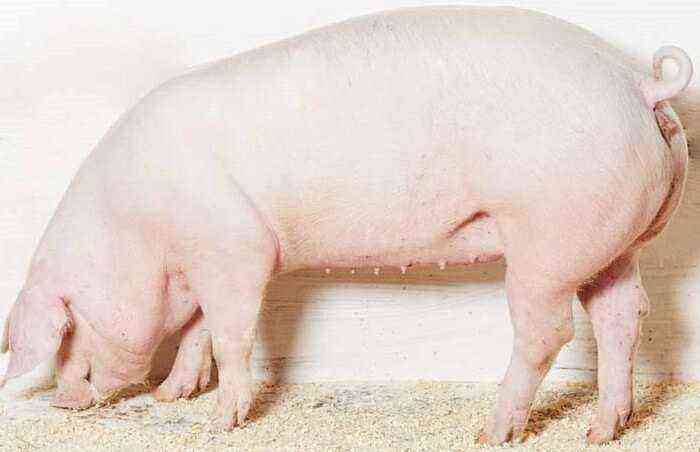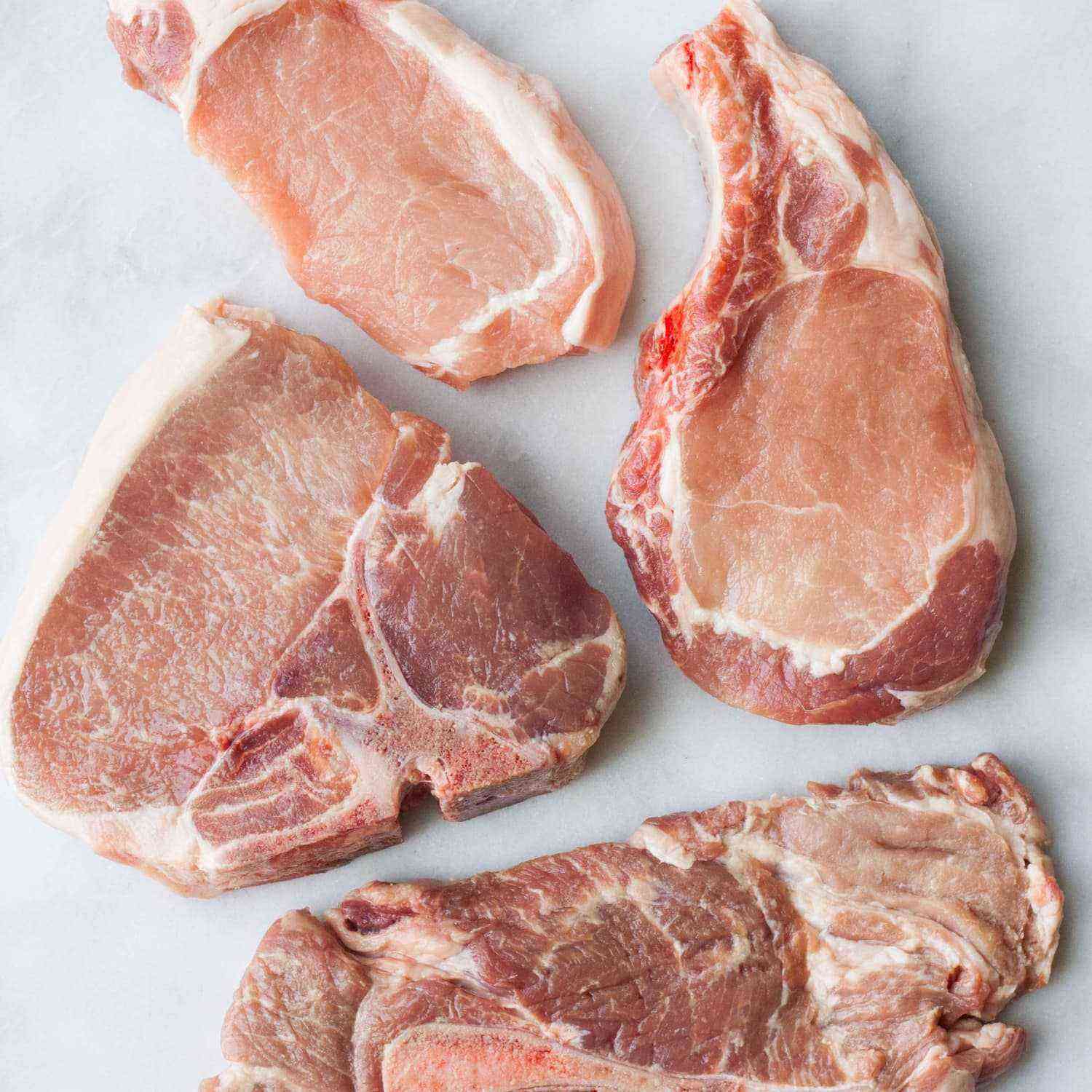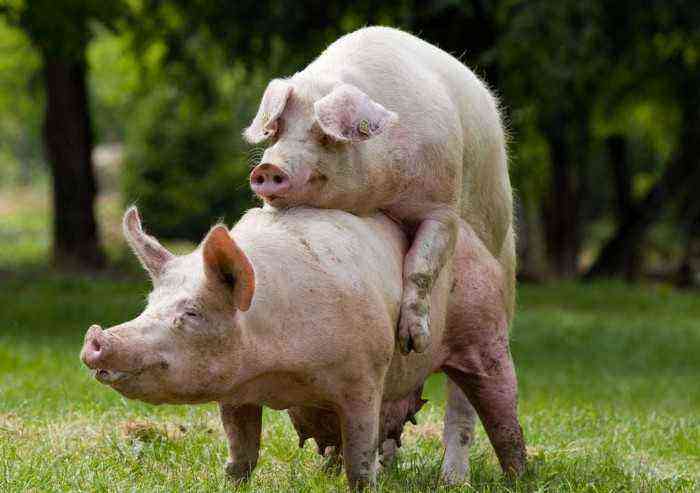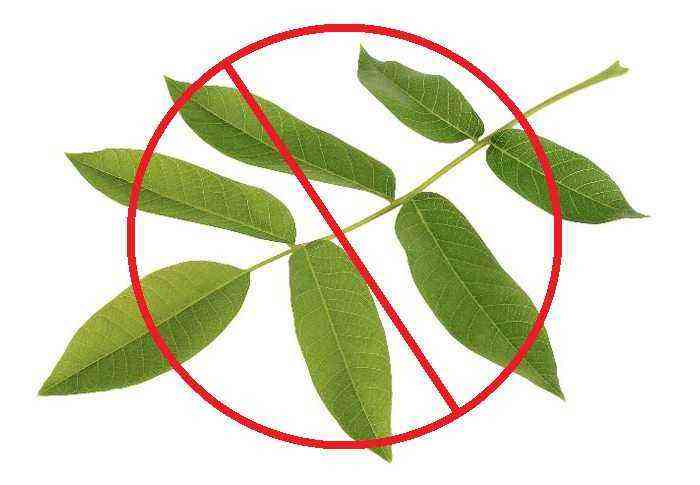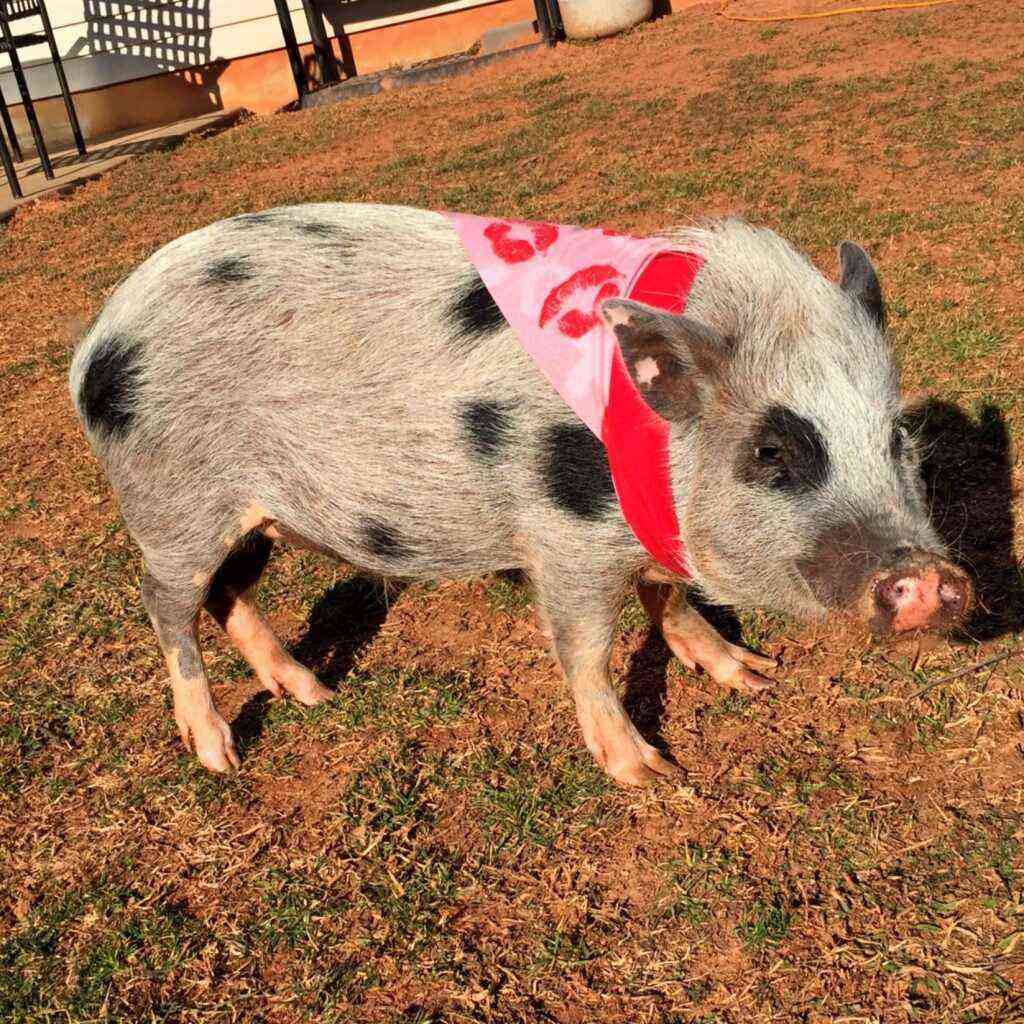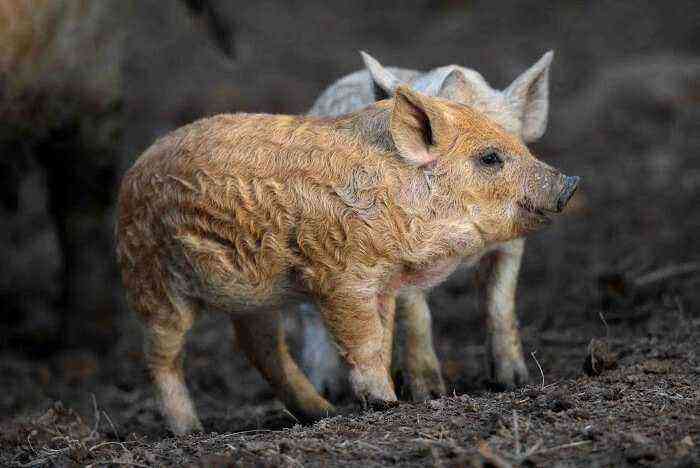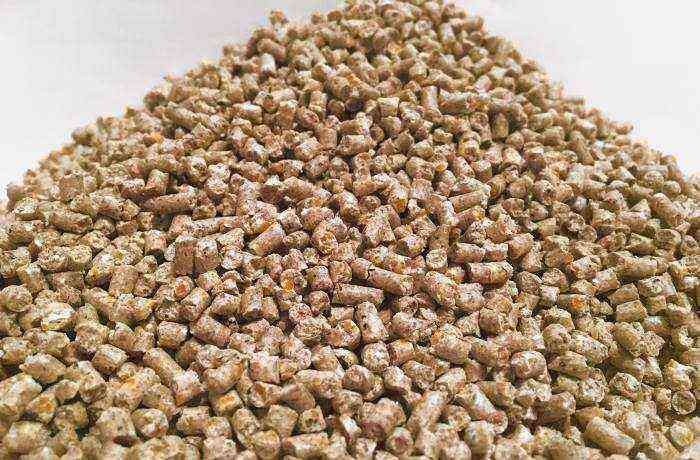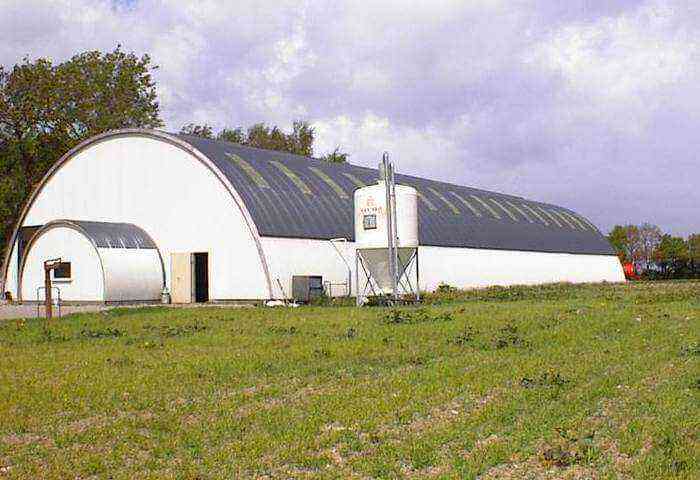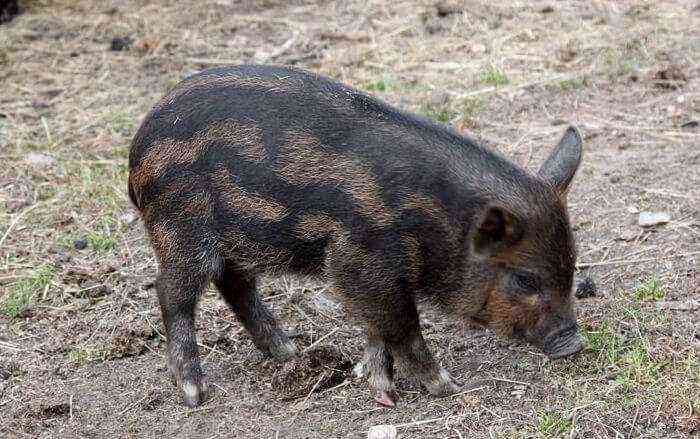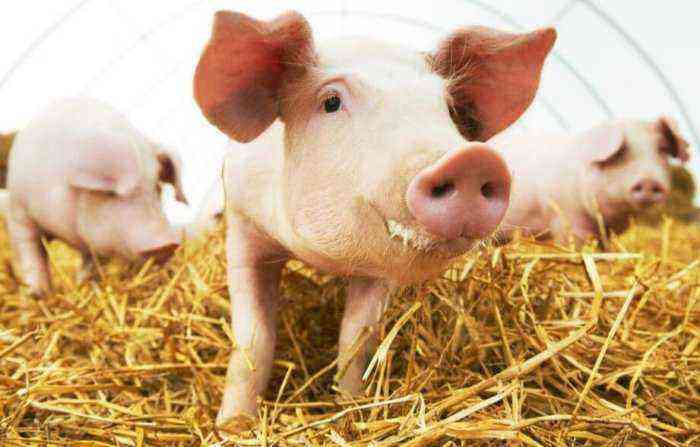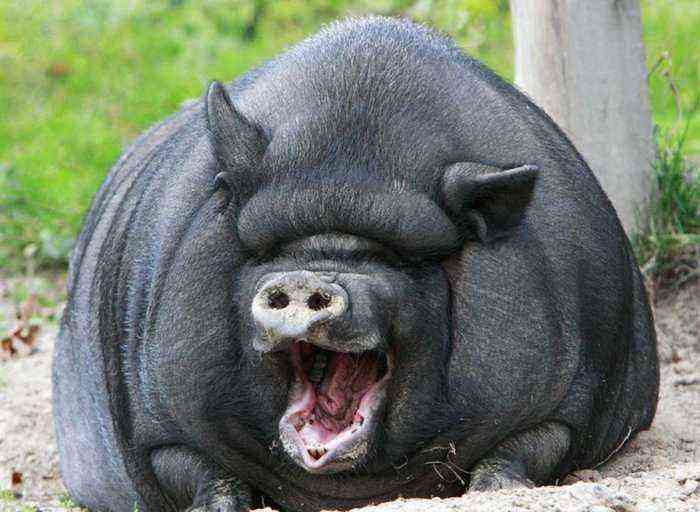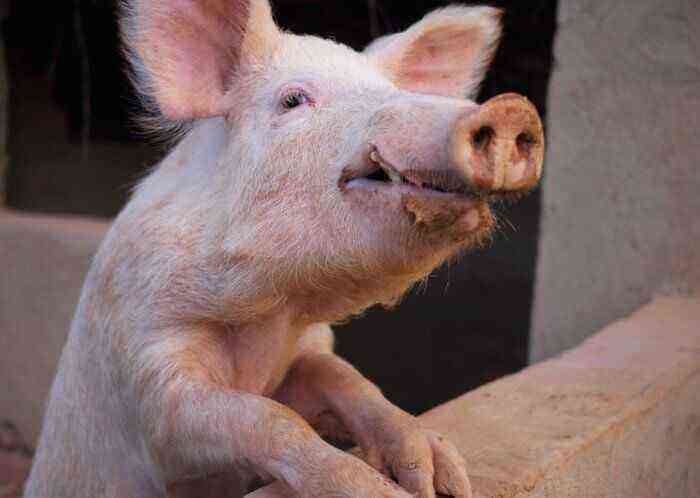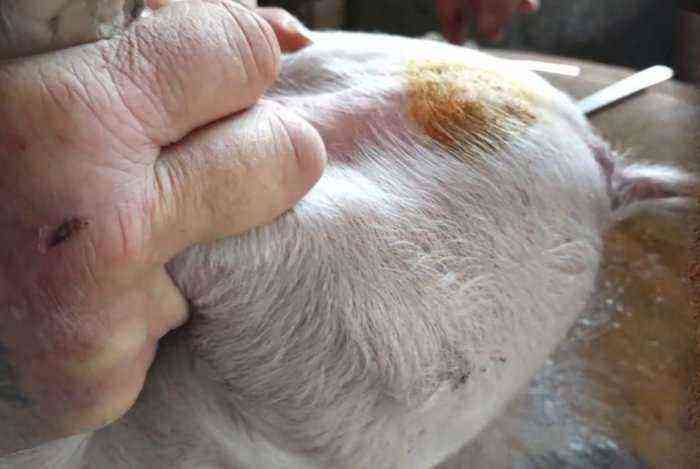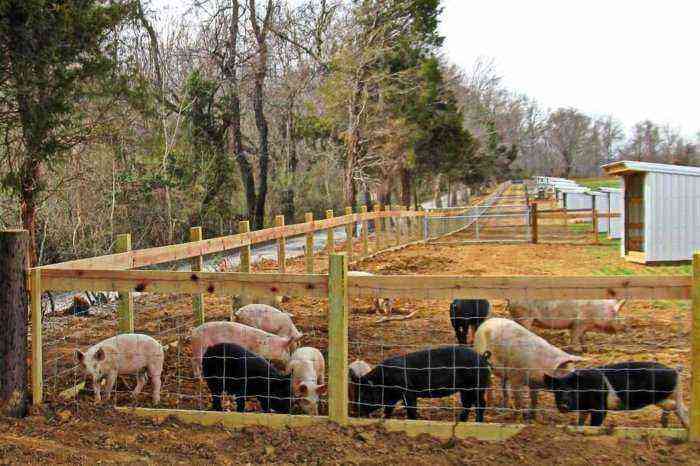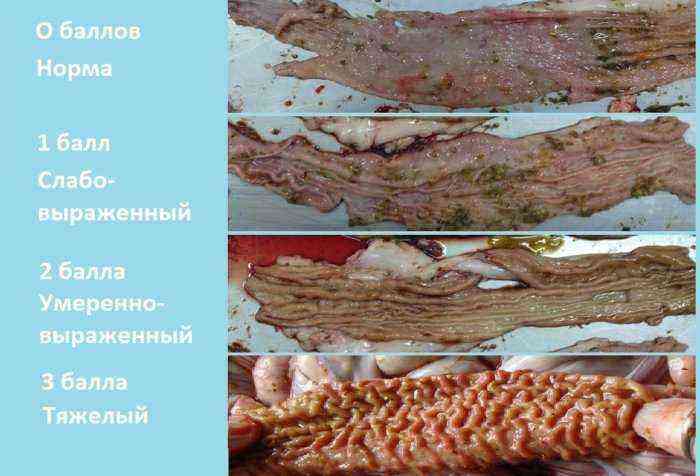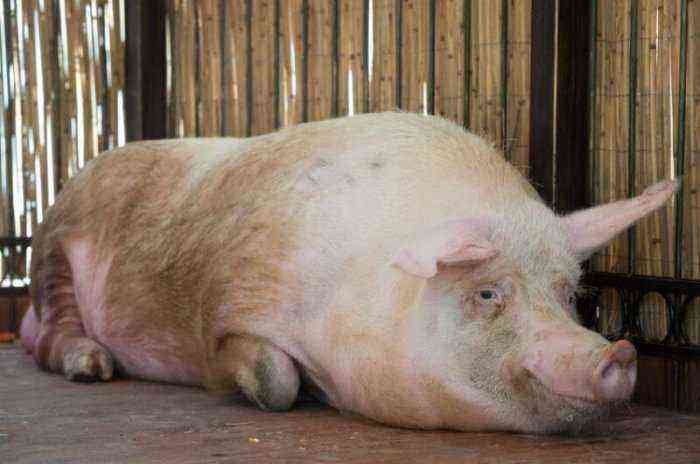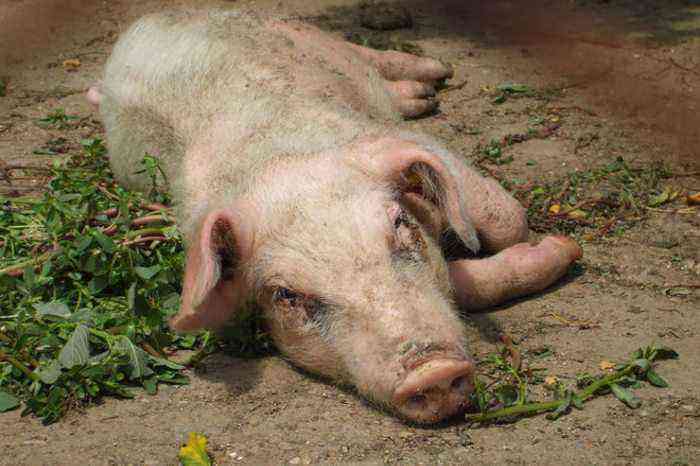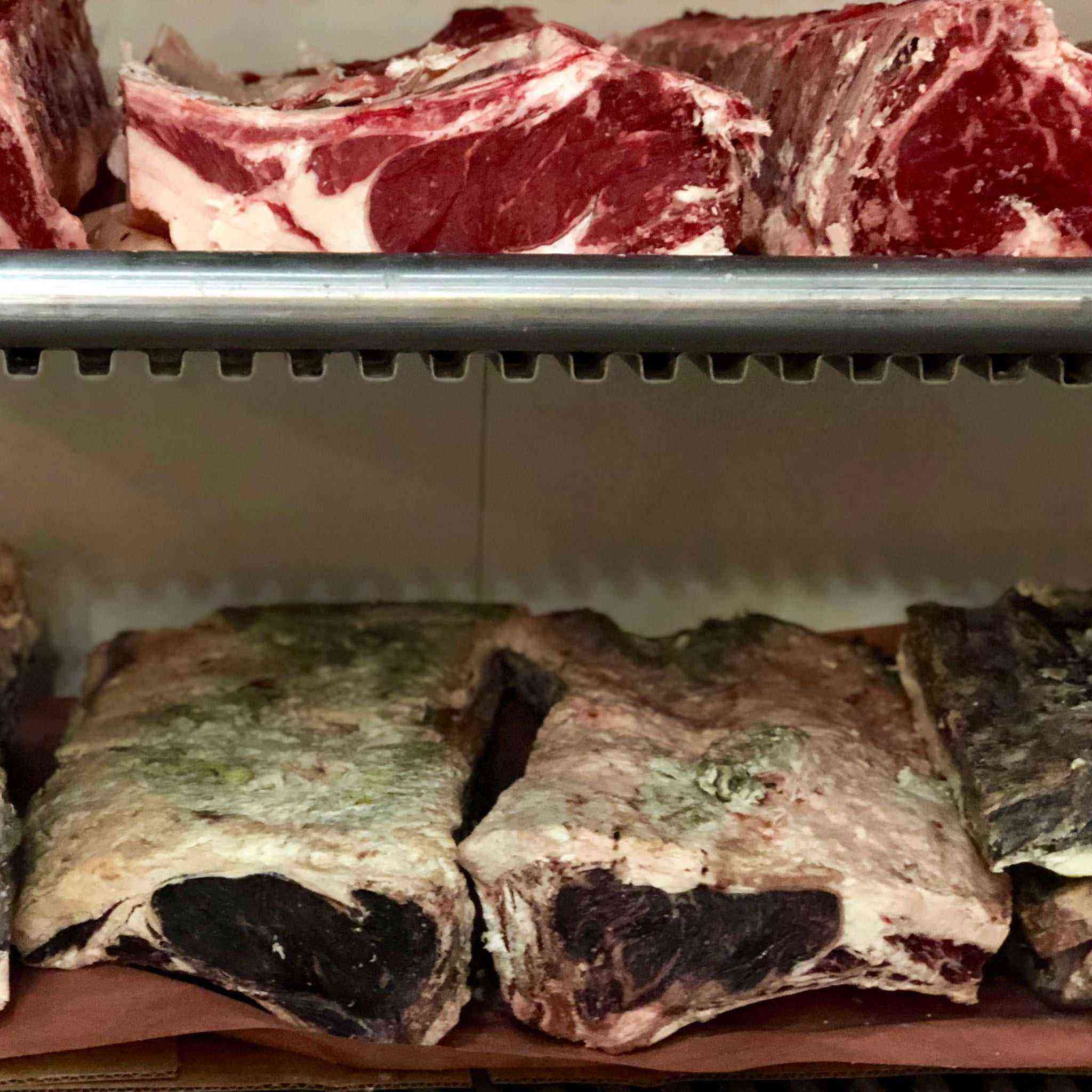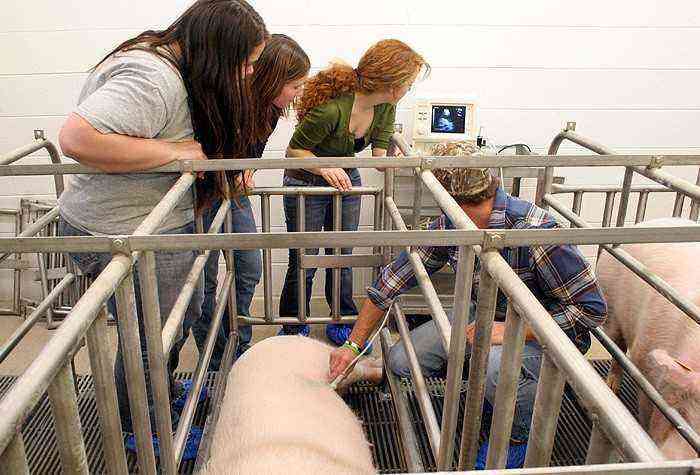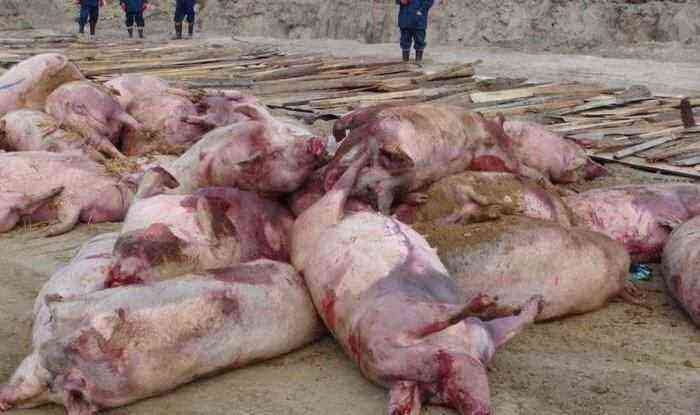The microclimate of livestock buildings is the state of the environment, which is formed as a result of the vital activity of animals in the conditions of a certain technology. The microclimate is assessed by the temperature and humidity of the air, the speed of movement of air flows in the room, the concentration of harmful gases, illumination, dust content of the air and its contamination with microorganisms.
All of these factors have a certain influence on the productivity of pigs, but to a greater extent, productivity depends on temperature, humidity and the speed of movement of the surrounding air. Pigs are very sensitive to changes in ambient temperature. Both low and high temperatures are equally undesirable for them. Reducing the indoor air temperature below the optimum level leads to increased metabolism, increased heat transfer and reduced productivity. Too high ambient temperature has a depressing effect on animals: they lose their appetite, the production of digestive juices is inhibited, the digestibility and utilization of feed nutrients deteriorate, which causes a decrease in productivity.
Newborn piglets are especially sensitive to changes in ambient temperature. They still have a poorly developed mechanism of thermoregulation, which helps to adapt to the ambient temperature. The most favorable temperature for suckling pigs in the first days after birth is +30-35 °C, at the end of the suckling period – +24 °C. Such a mode of cultivation at an air humidity of 65-70% contributes to a high intensity of growth and the safety of young animals.
Growing piglets at low temperatures (12–16 °C) negatively affects their safety, growth and development. Therefore, it is possible to keep lactating queens with piglets in winter in light-type premises only after they are carefully insulated with straw bales, reed mats, bags of straw.
Piglets from 2 to 4 months grow better at a temperature of 24-26 ° C at a humidity of 70-75%. A decrease in the temperature in the fattening pigs’ room for every degree, starting from 14 ° C, reduces the average daily gain in live weight by 2%, and an increase in temperature to 27-30 ° C causes a decrease in gain by 20-30%.
At low temperatures, feed consumption per 1 kg of growth in fattening increases by 0,5-0,6 feed. units
For sows, the optimum temperature is 16°C, with fluctuations from 13°C to 20°C. Elevated air temperature (28 ° C and above), especially before mating and in the first period of gestation, leads to a decrease in fertility and multiple pregnancy of queens, an increase in chicks and embryonic mortality, the number of stillborn and underdeveloped piglets. Sudden changes in temperature during the day have a detrimental effect on pigs, especially in combination with high humidity, which usually happens in uninsulated pigsties.
To ensure optimal conditions for keeping pigs, the degree of air humidity is important. The thermal conductivity of moist air is 10 times higher than that of dry air. In a room with high humidity at low temperatures, heat transfer in pigs increases. At high temperatures, due to the fact that water vapor is a poor conductor of heat, heat transfer and evaporation weaken, excess heat is formed in the body and overheating occurs.
Humidity in the room increases dramatically when there is a malfunction of the water supply, feeding pigs with liquid feed, removing manure with a water flush, and in the absence of ventilation. Dampness and high humidity in pigsties create favorable conditions for the development of pathogens of various diseases, cause colds and gastrointestinal diseases, reduce the resistance and productivity of pigs. The optimum air humidity for sows is 65-70%, for young animals for growing and fattening – 70-75%.
A significant impact on the body of pigs in combination with temperature and humidity is exerted by the speed of air movement. Moving air enhances the process of heat transfer and protects animals from overheating, but at low temperatures it can lead to hypothermia.
The intensity of movement of air streams of air determines the level of air exchange in the room. With increased air exchange, the relative humidity of the air decreases, with a lower one, dampness appears in the premises.
The necessary air exchange is achieved by natural and forced ventilation of the premises. The speed of air movement in the summer in rooms for sows with piglets should be in the range of 0,3-0,4 m/s, for piglets from 2 to 4 months – 0,6 m/s, for fattening young animals – up to 1 m/s with; in the cold season, respectively – 0,15 and 0,2 m/s. In the premises of pigs in a personal subsidiary farm, an exhaust pipe for removing polluted air is installed so that the air exhaust is at a height of 15-20 cm from the floor, and the supply air comes from above.
With a high density of animals, insufficient intensity of air exchange, untimely cleaning of manure in pig rooms, an increased concentration of ammonia, carbon dioxide and hydrogen sulfide is observed. With a high concentration of ammonia in the air, a spasm of the glottis occurs in pigs, the respiratory organs are affected: shortness of breath, inflammation, pulmonary edema occur, and death from respiratory paralysis may occur. The permissible concentration of ammonia for piglets up to 4 months of age is 15 mg/m3, for fattening young animals and adult pigs – 20 mg/m3.
The concentration of carbon dioxide in the air for all sex and age groups of pigs should not exceed 0,2%. An increase in its content in the air to 1% or more leads to an increase in heart rate and respiration, a decrease in the resistance and productivity of animals.
Hydrogen sulfide is a highly toxic gas. Its increase in excess of 10 mg / m3 causes poisoning of the body: in pigs, arrhythmia of the heart, catarrh of the respiratory tract, pulmonary edema, gastroenteritis appear, and live weight decreases.
It is possible to eliminate the toxic effect of harmful gases on pigs by ventilating the premises and creating the necessary air exchange using open windows on one side of the pigsty. There are practically no costs for ventilation, and the air flow increases dramatically.
Environmental conditions (temperature, humidity, air velocity), in which animals show the highest productivity, are called comfortable. The temperature is considered comfortable if the heat production in animals is at a minimum level and the pigs do not feel cold, i.e. the less feed energy is spent on the formation of heat, the more it goes to the formation of products and the more economically it is spent in the body.
Relative air humidity in the range of 60-75%, which does not have a harmful effect on the body of pigs, also meets the requirements of comfort.
The movement of air masses at a speed of 0,3-0,6 m/s at an air temperature of 20 °C has the most favorable effect on the organism of animals.
What simple tricks can you recommend to a hobby pig farmer to maintain comfortable or close to comfortable conditions in animal quarters?
Firstly, the insulation of floors, walls and ceilings in winter, the elimination of drafts, the use of dry bedding, the timely removal of manure, the feeding of dry or slightly moistened feed, the equipment of exhaust ventilation ducts.
Secondly, to reduce humidity, the floors and passages in the room should be sprinkled with a mixture of quicklime (fluff) with sawdust in a ratio of 1: 3 with a layer of up to 1 cm. Lime binds the moisture in the air well and helps maintain comfortable conditions in the room. After contamination lime is replaced.
Thirdly, clean the room after moistening the dry floor and bedding, wipe the dust with a rag, sweep with a broom or use a vacuum cleaner for this, regularly carry out mechanical cleaning and disinfection of the premises. To disinfect the air, use bactericidal lamps or ionizers, which can be purchased at hardware stores.
They immediately respond to the concerns of the pig breeder in creating comfortable environmental conditions for the animals with an increase in productivity: an increase in the number of pregnancies, the safety and intensity of growth of piglets, and better use of feed.
Maintaining the microclimate in a given mode lengthens the life of the premises and increases the productivity of pigs by 10%.
